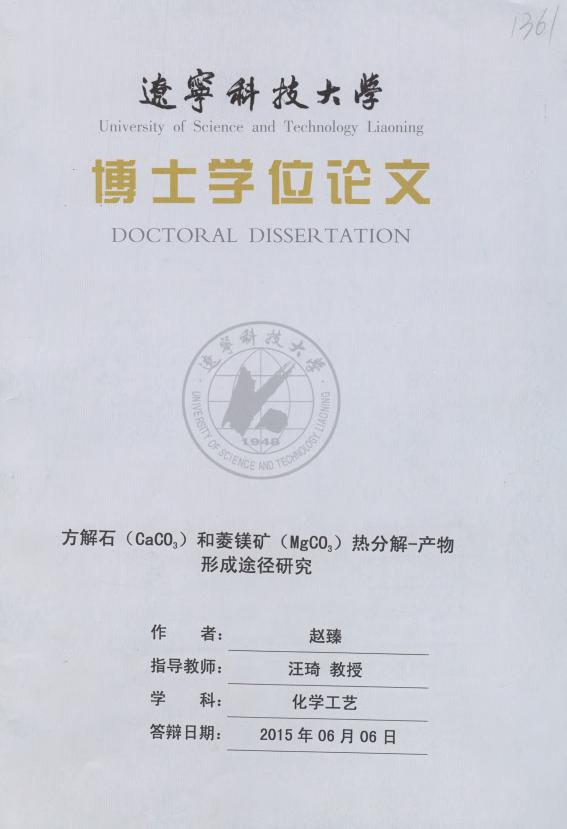| 英文摘要 |
The decomposition of calcite (CaCO₃) and magnesite (MgCO₃) is one of the most extensive solid reaction research content, which is of great significance to understand all solid thermal stability. Although the chemical reaction equations of the decomposition of calcite and magnesite are only one step, in terms of its nature of solid thermal decomposition reaction, the reaction process is very complex. Only from experimental research, it is difficult to obtain reaction mechanism of chemical bond rupture, crystal transformation and solid product nucleation and so on. So on the basis of macroscopic experimental research, this paper studies the thermal decomposition mechanism of calcite and magnaesite using quantum chemistry method, focusing on reaction pathways, crystal transformation and the product nucleation mechanism. The main research contents and results are as follows: (1) Using thermogravimetric (TG)-differential scanning calorimetry (DSC), under different heating rate (5 K/min-15 K/min),we test thermal decomposition process of 4 ㎎ calcite powder. Experimental results show that the dynamic information obtained from the TG and DSC experiment curves of calcite decomposition have obvious differences, which indicates that the process of reaction has crystal transformation. (2) Using quantum chemistry software packages Gaussian03,the potential energy surface information of the decomposition reactions of calcium carbonate and magnesium carbonate are calculated at the MP2(full)/6-311++G** level, and their microscopic reaction mechanisms are analyzed. Both the decomposition reaction of calcium carbonate and that of magnesium carbonate have four reaction paths. Within the scope of the decomposition temperature, the reaction rate constants of rate-determining step are calculated using conventional transition state theory (TST). Compared with the experimental values, the most feasible path for the decomposition reaction of calcium carbonate and magnesium carbonate are determined, they are listed as follows: R(CaCO₃)→IM〓(OCO·CaO)→P(CaO+CO₂), R(MgCO₃)→IM₀(OCO·MgO)→ P(MgO+CO₂). (3) On the basis of all intermediates of the decomposition reaction of calcium carbonate and magnesium carbonate, the crystal structures of the intermediates are predicted by simulated annealing method in the Polymorph Predictor module. The results show that calcite (R〓c) transforms to CaO crystal via Pbca polymorphs while magnesite (R〓c) transforms to MgO crystal via Pnα2₁ polymorphs during the thermal decomposition. (4) The nucleation mechanisms through clusters evolution of the thermal decomposition products of calcite and magnesite are predicted by First-principles. The structures, free energies and ΔG function of (CaO)〓 (n=1-13) and (MgO)〓 (n=1-13) are obtained by density functional theory calculations. The clusters growing mechanisms of CaO nucleation and MgO nucleation are inferred by the thermodynamics stability of clusters. Based on the two-step nucleation mechanism, the nucleation micro evolution process of CaO crystal and MgO crystal are presented as: single molecule MO→MO clusters→MO metastable crystal→MO nanocrystals (M = Ca, Mg). Key Words : Calcite,Magnesite, Thermal decomposition mechanism, Quantum chemistry, Crystal transformation, Nucleation mechanism
|

